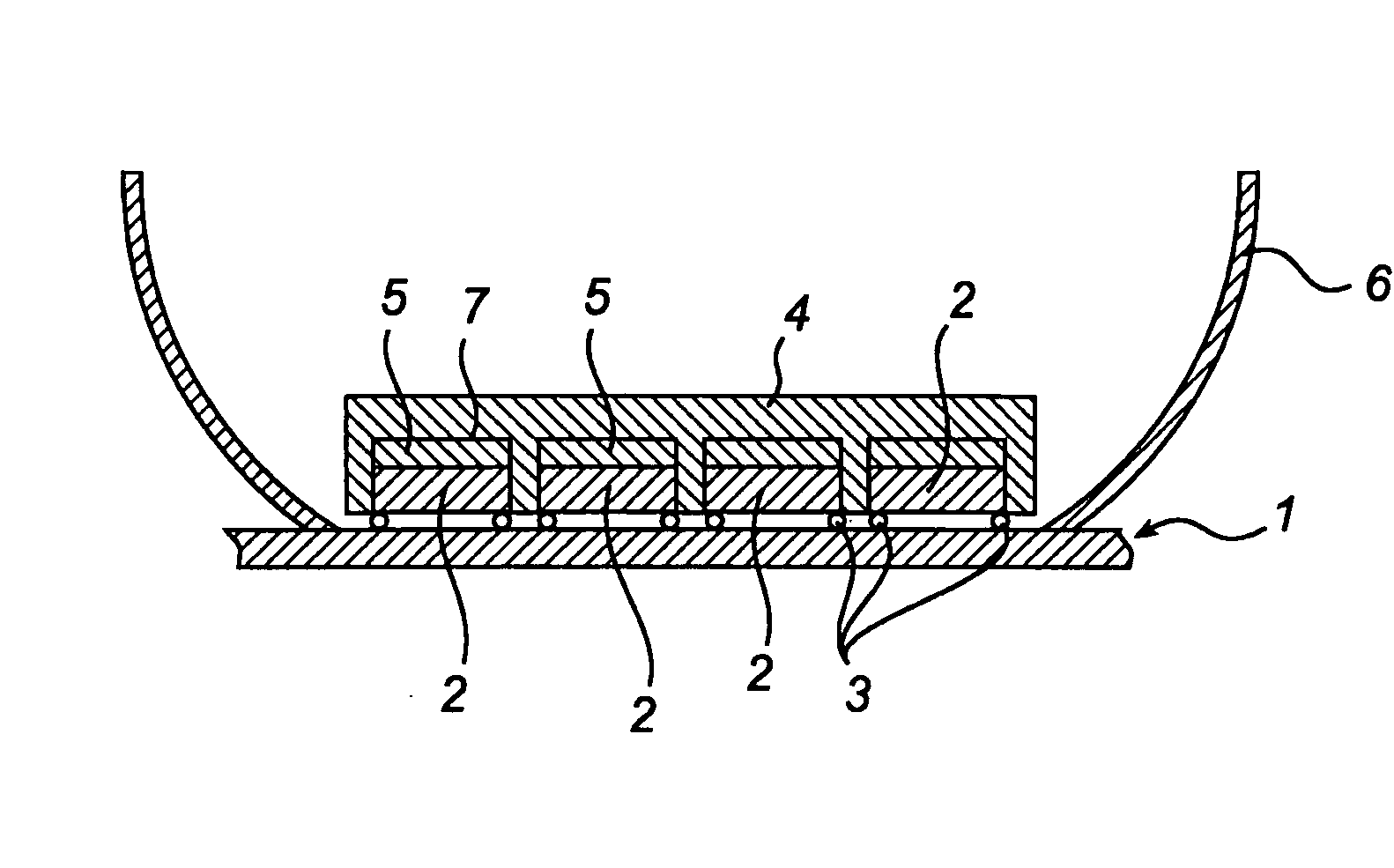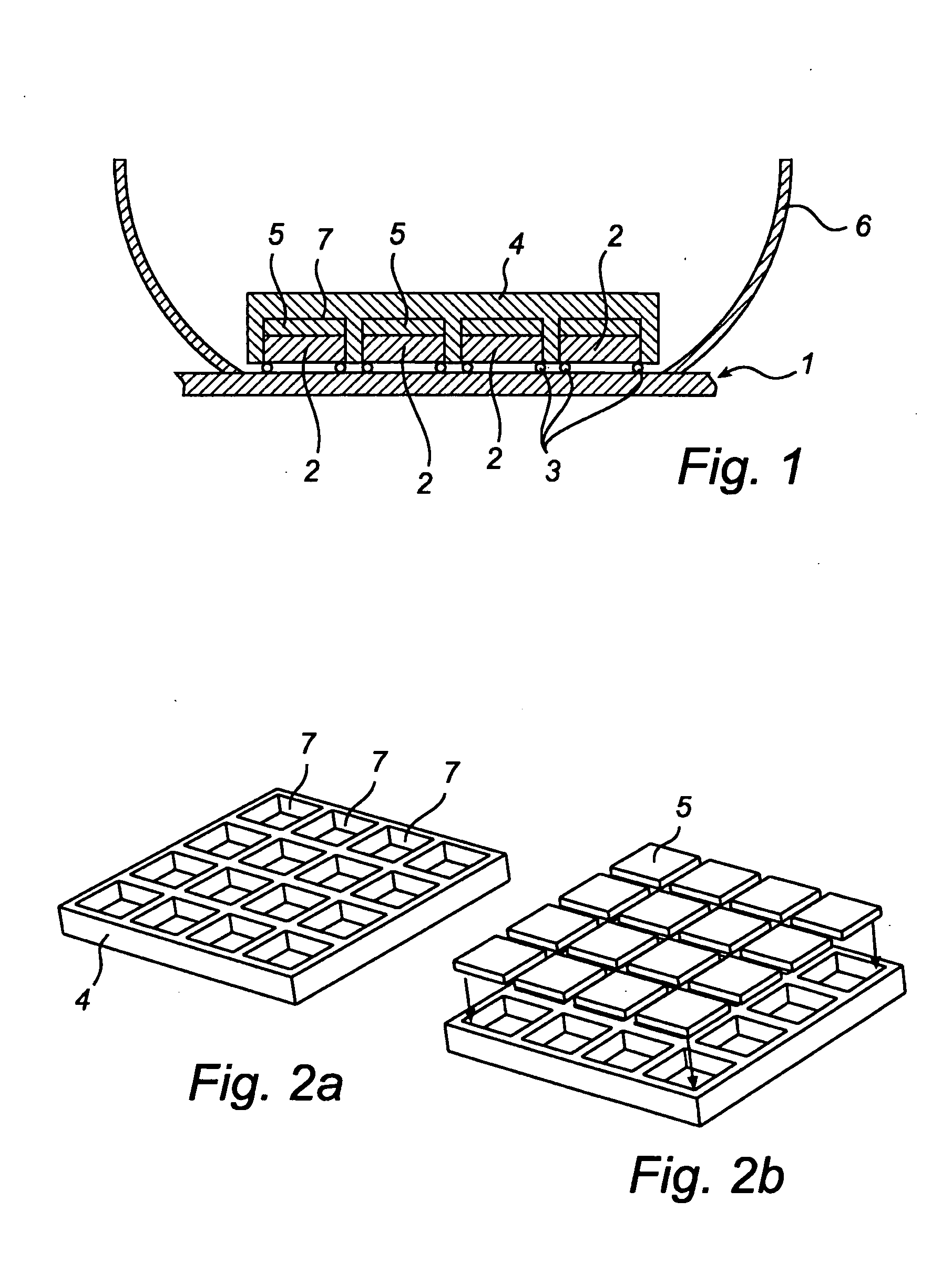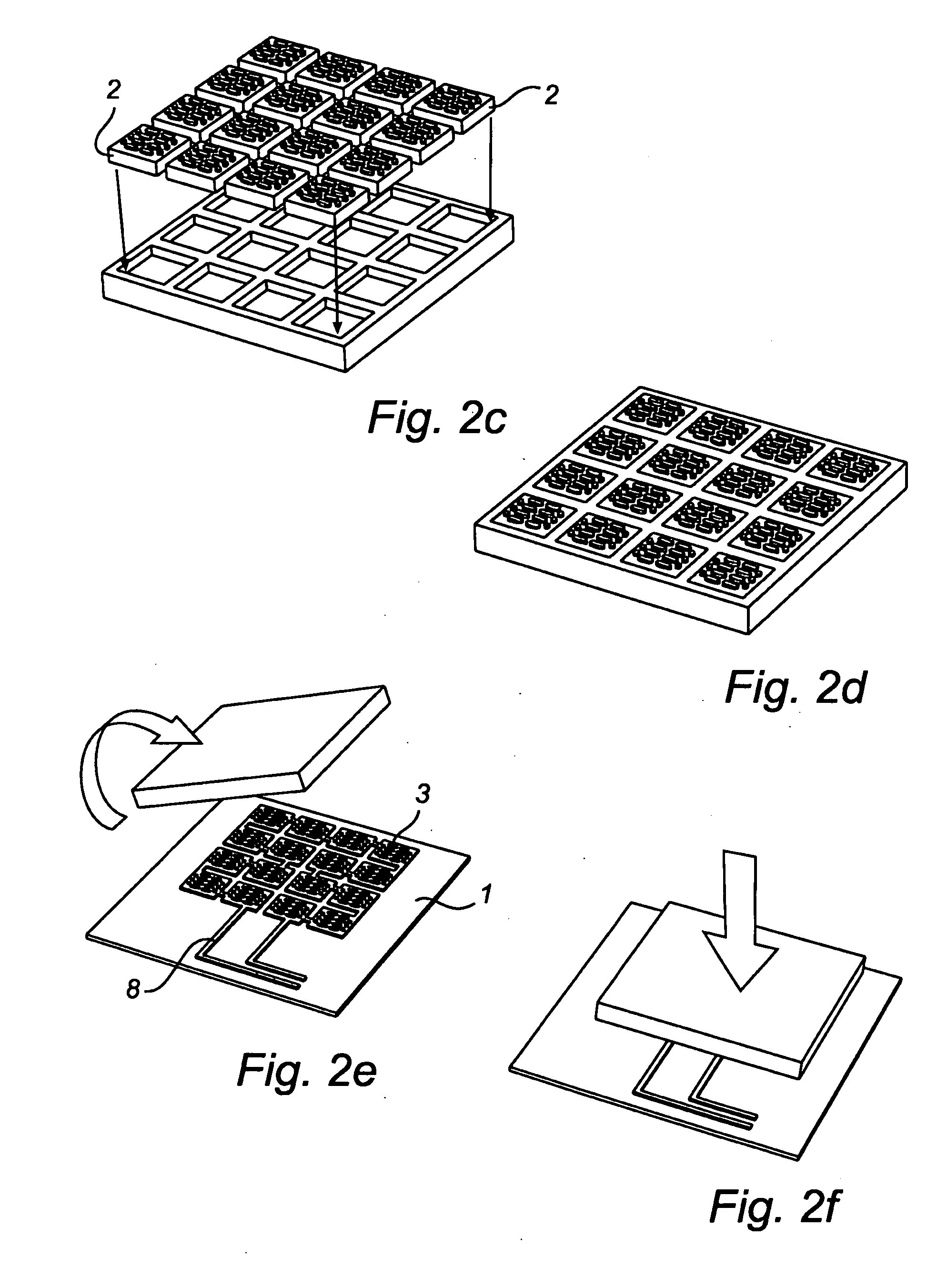Light-emitting device with inorganic housing
- Summary
- Abstract
- Description
- Claims
- Application Information
AI Technical Summary
Benefits of technology
Problems solved by technology
Method used
Image
Examples
Embodiment Construction
[0032]The present invention will now be described more in detail with reference to the drawings.
[0033]A preferred embodiment of the present invention, as shown in FIG. 1, comprises a substrate 1 provided with a circuitry. An array of light-emitting diodes (LEDs) 2 are arranged on the circuitry, and each LED of the array are separately connected to the circuitry by metal bumps 3 at pre-determined positions.
[0034]The LEDs 2 are arranged in separate recesses in a housing 4 of a translucent inorganic material, and the location and the orientation of each LED is determined by the walls of the recess. A translucent inorganic contact layer 5 is arranged between each LED and the housing 4, in the recesses to optically connect and physically bind the LED to the housing.
[0035]Furthermore, a specular reflector 6 is arranged on the substrate 1 to collimate the light emitted by the device.
[0036]A preferred method for the manufacture of a light-emitting device of the present invention is outlined...
PUM
 Login to View More
Login to View More Abstract
Description
Claims
Application Information
 Login to View More
Login to View More - R&D
- Intellectual Property
- Life Sciences
- Materials
- Tech Scout
- Unparalleled Data Quality
- Higher Quality Content
- 60% Fewer Hallucinations
Browse by: Latest US Patents, China's latest patents, Technical Efficacy Thesaurus, Application Domain, Technology Topic, Popular Technical Reports.
© 2025 PatSnap. All rights reserved.Legal|Privacy policy|Modern Slavery Act Transparency Statement|Sitemap|About US| Contact US: help@patsnap.com



